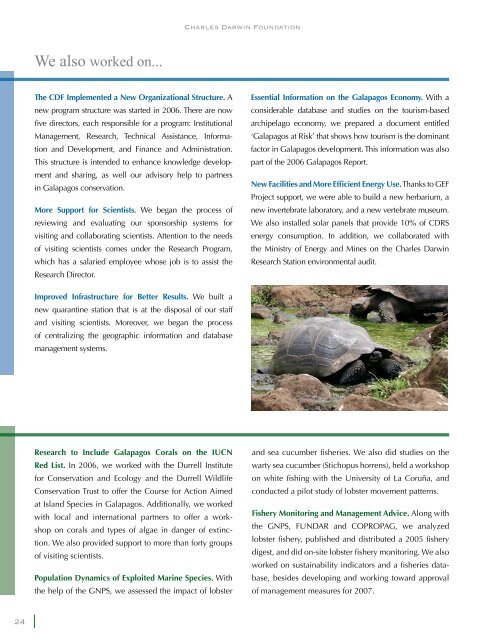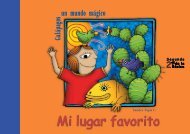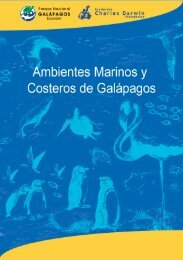Table of Contents - Fundación Charles Darwin
Table of Contents - Fundación Charles Darwin
Table of Contents - Fundación Charles Darwin
Create successful ePaper yourself
Turn your PDF publications into a flip-book with our unique Google optimized e-Paper software.
24<br />
We also worked on...<br />
The CDF Implemented a New Organizational Structure. A<br />
new program structure was started in 2006. There are now<br />
five directors, each responsible for a program: Institutional<br />
Management, Research, Technical Assistance, Informa-<br />
tion and Development, and Finance and Administration.<br />
This structure is intended to enhance knowledge develop-<br />
ment and sharing, as well our advisory help to partners<br />
in Galapagos conservation.<br />
More Support for Scientists. We began the process <strong>of</strong><br />
reviewing and evaluating our sponsorship systems for<br />
visiting and collaborating scientists. Attention to the needs<br />
<strong>of</strong> visiting scientists comes under the Research Program,<br />
which has a salaried employee whose job is to assist the<br />
Research Director.<br />
Improved Infrastructure for Better Results. We built a<br />
new quarantine station that is at the disposal <strong>of</strong> our staff<br />
and visiting scientists. Moreover, we began the process<br />
<strong>of</strong> centralizing the geographic information and database<br />
management systems.<br />
Research to Include Galapagos Corals on the IUCN<br />
Red List. In 2006, we worked with the Durrell Institute<br />
for Conservation and Ecology and the Durrell Wildlife<br />
Conservation Trust to <strong>of</strong>fer the Course for Action Aimed<br />
at Island Species in Galapagos. Additionally, we worked<br />
with local and international partners to <strong>of</strong>fer a work-<br />
shop on corals and types <strong>of</strong> algae in danger <strong>of</strong> extinc-<br />
tion. We also provided support to more than forty groups<br />
<strong>of</strong> visiting scientists.<br />
Population Dynamics <strong>of</strong> Exploited Marine Species. With<br />
the help <strong>of</strong> the GNPS, we assessed the impact <strong>of</strong> lobster<br />
<strong>Charles</strong> <strong>Darwin</strong> Foundation<br />
Essential Information on the Galapagos Economy. With a<br />
considerable database and studies on the tourism-based<br />
archipelago economy, we prepared a document entitled<br />
‘Galapagos at Risk’ that shows how tourism is the dominant<br />
factor in Galapagos development. This information was also<br />
part <strong>of</strong> the 2006 Galapagos Report.<br />
New Facilities and More Efficient Energy Use.Thanks to GEF<br />
Project support, we were able to build a new herbarium, a<br />
new invertebrate laboratory, and a new vertebrate museum.<br />
We also installed solar panels that provide 10% <strong>of</strong> CDRS<br />
energy consumption. In addition, we collaborated with<br />
the Ministry <strong>of</strong> Energy and Mines on the <strong>Charles</strong> <strong>Darwin</strong><br />
Research Station environmental audit.<br />
and sea cucumber fisheries. We also did studies on the<br />
warty sea cucumber (Stichopus horrens), held a workshop<br />
on white fishing with the University <strong>of</strong> La Coruña, and<br />
conducted a pilot study <strong>of</strong> lobster movement patterns.<br />
Fishery Monitoring and Management Advice. Along with<br />
the GNPS, FUNDAR and COPROPAG, we analyzed<br />
lobster fishery, published and distributed a 2005 fishery<br />
digest, and did on-site lobster fishery monitoring. We also<br />
worked on sustainability indicators and a fisheries data-<br />
base, besides developing and working toward approval<br />
<strong>of</strong> management measures for 2007.





